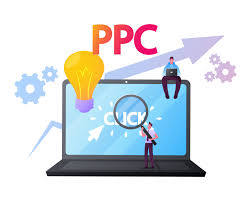10 Surprising Influencer Marketing Trends That is Dominating 2024!

Businesses are now accessing a more human and relatable type of ads by utilizing influencers’ reach and credibility, which allows them to connect with potential customers in a manner that traditional advertising frequently cannot. Influencer marketing is a vital part of many contemporary marketing strategies since it can increase brand recognition, legitimacy, and customer involvement. Influencer partnerships are made possible by corporations’ growing interest in sponsored content, as compared to traditional social ads. According to adage, 92% of brands want to expand their investment in influencer marketing. Influencer and brand partnerships are increasing, and we keep a close eye on trends that impact these relationships. I believe that these are the most popular trends in 2024 so far. The Growing Effect of AI Brands and content producers appear to be cautiously hopeful about incorporating artificial intelligence (AI) into their influencer marketing campaigns. According to a September 2023 survey carried out, 52% of influencers and 76% of marketing agencies now use AI in some capacity to enhance content production, locate influencer partners, and analyze data. Some companies are taking it a step further and using virtual influencers in place of more conventional creators. Social media sites are aware of how AI is affecting the creative sector. In an effort to “democratize creativity,” YouTube recently released AI tools that simplify difficult processes. Similarly, TikTok recently launched a new feature that lets content producers identify work that is assisted or made by AI. TikTok beyond Gen Z Uses Only As TikTok grows in popularity, more and more senior users are joining the platform, adding to its already diverse user base. Although affluent Gen Xers are spending more time on TikTok, just 5% of advertising budgets are allocated to targeting this audience. This presents a chance for influencers and advertisers to reach a wider audience. Retirees known as “grandfluencers,” who are gaining popularity on social media, are also making inroads on TikTok and Instagram and forming alliances with businesses such as Carnival Cruise Lines. Moving From Generalists To Experts Influencers are narrowing their focus as the social media content market gets increasingly crowded. Influencers are increasingly focusing on certain topics, like anti-aging or curly hair, instead than sharing broad beauty advice and ideas as they once might have. One influencer, Eilidh Moffat, witnessed an 841% gain in her following in 2023 as she specializes in skin care for the over-40 demographic. The same holds true for other influencer markets, such as tourism (specifically, Disney family vacations rather than broad travel). Creators that have a specialized following appeal to brands more because they enable them to narrow their emphasis to the correct target. The Expansion of Social Commerce In the past, TikTok and Instagram have shown to be more appropriate social media platforms for raising awareness. Nonetheless, marketers have even more motivation to forge closer strategic ties with influencers as a result of the development and expansion of social commerce. The popularity of live shopping is also rising. Consider it the interactive, modern-day equivalent of a home shopping channel, where prospective customers can engage in immersive experiences and learn about items through sessions with reliable influencers. Retail behemoths such as Walmart and Amazon are proactively leveraging live shopping and cultivating connections with creators to bolster their market domination. As they set the standard, other retailers usually follow suit. Repurposing Content Created by Influencers When it comes to more transient material, such as Instagram Stories or TikToks, brands that are hesitant to use influencer content can be concerned about their investment and if they’re receiving a satisfactory return. For this reason, a lot of them are changing the way they draft influencer contracts to provide for additional chances to repurpose the material. Influencer-generated content is being used by brands in a variety of marketing channels, such as emails, digital ads, traditional television advertisements, and more. The intention is to imitate the aesthetic of sites such as TikTok, but to do it in a way that propels quantifiable behaviors and expedites the purchasing process. LinkedIn have been Getting Hotter People are using LinkedIn at record-breaking levels to connect, grow in their jobs, and advertise business-to-business (B2B) goods. Marketing spending usually follows engagement, which is why industry leaders like Intel and Hootsuite are cultivating relationships with LinkedIn influencers and why 75% of B2B marketers are currently engaging in influencer marketing. The development of enduring content, such as Hootsuite’s social media career report, and the endorsement of numerous influencers have greatly increased its amplification and power. There have been almost 1.2 million impressions so far. Influencers and brands usage of AI. Marketers are actively using AI technologies for data analysis, influencer identification, and brainstorming in order to take advantage of these potential. Marketing campaigns are already effectively embracing AI solutions and are yielding higher efficiency and ROI. Conclusion Despite how far influencer marketing have evolved, there is unrealized business potential in creating content on TikTok that appeals to a wide range of viewers, especially older demographics. In order to navigate the crowded social media landscape, brands and influencers would be well to specialize strategically. In order to vary their outreach efforts and more successfully reach their target, marketers should welcome these micro-influencers with highly targeted audiences. Influencers shouldn’t be scared to hone in on a niche market. Anticipating the future, a concentration on specialized niches, the astute incorporation of artificial intelligence, and inventive applications of content generated by influencers will probably characterize a year full of inventive breakthroughs and expansion for influencers and companies alike. GET IN TOUCH Remember, brand is more than just a snappy tagline, a logo, or a few colors. Get in touch let’s help you craft a brand that depicts all the things your company stands for,
The Future of Marketing: Why Digital Branding is Your Secret Weapon

Over the years, the definition of a brand has evolved significantly. Previously, a brand consisted of a logo, a few colors, and a variety of fonts. Today, brands are identified by the emotions they arouse in people who see them. Experience and perception are key components of branding. Enhancing your marketing, recognition, market share, and revenue can be achieved with the use of a brand. You may be wondering how a business is able to achieve all of these goals. Let’s use Nike as a case study Several decades prior, Nike was facing difficulties in gaining traction with athletes. They weren’t well-known for making athletic footwear, and not many serious athletes purchased from them. They were obviously going to have to change and come up with a new, appealing message for the market. Nike started using the famous “Swoosh” emblem in 1985, but it was just the beginning. The corporation sent its agency a big order for commercials, all of which included different sports and events. Still, something was missing to bring everything together. When Walt Stack, an octogenarian runner, wore branded sneakers for his morning run in 1988, Nike shot to fame in the sports world. The commercial’s message? Just do it. Athletes who believed the message spoke to them began to send in feedback within hours. Nike quickly established itself as the go-to brand for athletes. It goes beyond just a tagline or logo. It’s an idea and an emotion that motivates people to lead active lives everywhere—men and women alike. That is what a powerful brand can do. It goes beyond only getting acknowledged. Rather, the goal is to elicit strong feelings and thoughts from viewers of your website, advertisements, merchandise, and marketing materials each time they see your logo. Why Is Brand Investment Necessary? Reality can be reshaped by a brand. It’s a brand that makes people want your product, which is why some companies sink thousands into developing their business identity. How people perceive your products or services is what’ll make them choose you over your competitors. The first and most crucial thing you need to do is stop thinking of brand development as an expense, and consider it an investment. Properly building this identity is crucial to influencing how people see your goods, and whether they’ll opt to buy from you. Remember that building a brand is a long-term, continuous effort that offers the following advantages: What Characterizes a Brand? The development of a strong brand involves several components. While it would be impossible to list them all, we will focus on a few of the most important and fundamental factors that must be taken into account when creating a business brand identity. Compass Brand Your branding journey starts with the brand compass—not with colors and logos, but with purpose. What are your company’s goals, values, mission, and vision? These strategic objectives might help you decide how to position and develop your brand. Organizational Culture Offering sleeping pods in the break room, pool tables in the cafeteria, or personal development programs for office workers are just a few examples of what company culture entails. Instead, pay attention to your basic values—the tenets that guide your interactions with coworkers and the wider community and explain your actions. It will inspire workers, transforming them into brand promoters. Individuality Which terms best describe your brand? Sincerity, skill, toughness, glamour, or technicality? These are the characteristics that your customers relate to and find dependable. Name and Catchphrase Coming up with a name and a catchphrase is a very difficult task. You need to discover something that is available, relevant, and recognizable rather than just picking a name. An acronym, like Nike, can be brief and expressive, or it might be descriptive, like as Toys R Us. Identity Creating a logo alone won’t adequately convey your firm’s personality and culture. Instead, it must be an integral part of your brand. Nor does it have to be a name. One may possess a: Choose a logo style that suits your company. Tone, Message and Voice What would your brand or company say and how would it express it if it could speak? Would it sound like a sarcastic young adult with a “tude, or would it speak in a rough, adventurous tone? What kind of message are you sending to your clients? Adding a human element to your brand helps increase consumer recognition and identification. Final Design and Architecture The majority of people start the architectural process at the very end. Only once you’ve determined everything in the preceding steps can you begin to develop your brand. The names, colors, and symbols are all integrated into one harmonious whole by the architecture. Conclusion A brand is more than just a snappy tagline, a logo, or a few colors. It is a graphic depiction of all the things your company stands for, including its mission, values, message, offerings, and services. When you devote the necessary resources—money and time—to creating a strategic business brand identity, you will ultimately reap the rewards. GET IN TOUCH Remember, brand is more than just a snappy tagline, a logo, or a few colors. Get in touch let’s help you craft a brand that depicts all the things your company stands for,
Why 90% of PPC Campaigns Fail and How You Can Avoid Their Mistakes

Pay-per-click (PPC) marketing can be one of the most efficient—or annoying—methods to grow your company. Due to a few basic errors, most businesses struggle to fully realize the potential of PPC. The unfortunate thing is that these errors are simple to correct and may be avoided! Why then do PPC ads not succeed? In this post, we’ll go over five of the most frequent PPC errors that cost businesses thousands of dollars per month in lost revenue and squandered advertising expenses, along with advice on how to avoid them. Not adding negative keywords Make sure the clicks coming from PPC campaigns are good quality and coming from prospects who are most likely to convert when you’re investing your marketing budget in this kind of advertising. Because Google offers multiple match types for your advertisements, they will appear for a variety of keywords, not all of which are pertinent to your company, therefore you will need to stop your ads from appearing for them. Until you instruct it not to, Google will show your ads for generic keywords like “free” and “cheap.” Therefore, if you’re utilizing phrase match keywords in your campaigns, terms like “free” and “cheap” as well as other terms that Google deems relevant may cause your advertisements to appear. Make sure the clicks coming from PPC campaigns are good quality and coming from prospects who are most likely to convert when you’re investing your marketing budget in this kind of advertising. Because Google offers multiple match types for your advertisements, they will appear for a variety of keywords, not all of which are pertinent to your company, therefore you will need to stop your ads from appearing for them. Until you instruct it not to, Google will show your ads for generic keywords like “free” and “cheap.” Therefore, if you’re utilizing phrase match keywords in your campaigns, terms like “free” and “cheap” as well as other terms that Google deems relevant may cause your advertisements to appear. Ignoring Conversion Tracking Whether it’s your social media ads or PPC management, conversion tracking is a crucial tool for assessing the performance of paid media initiatives. It’s like trying to navigate in the dark without this crucial measure. Insightful data analysis and strategic decision-making can be greatly aided by properly configuring tracking measures utilizing Google Tag Manager (GTM) and other data gathering sources. With GTM, you don’t have to worry about breaking into the intricate structure of your website to apply monitoring measures. Individual occurrences can then be tracked and imported into Google Analytics for further monitoring and reporting. Excellent insights are provided by tools like Google Analytics and GTM, which you can use to optimize your ads and website and improve the performance of your PPC campaigns. You may successfully increase conversion rates and steer clear of typical pitfalls by monitoring data trends and making necessary adjustments to your plans. Not using location targeting Your target audience should be the foundation of any effective PPC campaign. It follows that, if you own a local business, you probably want to focus on local clients. Spending money on customers who will never come into your store or make a purchase from you could be a waste if you target other cities. You can prevent your advertising from appearing in places you might not be able to deliver by using negative location targeting. You can make sure the appropriate people see your advertising in the right places by using location targeting with Google advertising. This can improve conversions and click-through rates, thus enhancing the effectiveness of your advertisements. Neglecting Testing and Optimization Continuous testing and optimization are essential components for raising campaign efficacy and ensuring that your marketing tactics resonate with the intended audience. Ignoring these two factors can lead to campaigns that remain static, marketing tactics that are not optimized, and a failure to recognize areas of weakness or opportunity for growth. The notion that one-time testing is sufficient is a misconception that we frequently see, but the truth is far different. Achieving success requires ongoing observation, analysis, and strategy revision in response to new information. It’s an ongoing “work in progress” that calls for dexterity and proficiency. A method of optimization that focuses just on the most obvious measures may miss opportunities for enhancement. Failing to Craft Ad Copy Your PPC campaign will attract attention, enhance click-through rates, and increase conversions if they have compelling, creative, and successful ad copy. Paid ads efforts need to connect with your target, be memorable, and bring about the required result. Creating generic material that does not appeal to the target audience, ignoring the usage of target keywords, and failing to write an effective call to action are common mistakes in ad copy. Another common error is to overlook the significance of writing ad copy that complies with the specific platform being utilized or to ignore the character limit restrictions. Keep an eye out for these mistakes, since they could have a big impact on how successful your campaign is. Here are some pointers for crafting persuasive ad copy: We understand that creating effective ad material for your company can be difficult, particularly since Google only allows headlines to be 30 characters long and descriptions to be 90 characters long. Still, within the constraints of different platforms, you may produce excellent ad copy with the aid of numerous AI tools available online. As an alternative, you may always think about hiring an professional agency like Dgazelle to create outstanding ad copy GET IN TOUCH Over the years, we’ve worked with countless clients across many sectors, guiding them towards their desired success. If you’re feeling overwhelmed or unsure, let us lend our expertise. Get in touch with our team, and let us help you optimise your ad performance.
The Dark Side of Email Marketing: Common Mistakes That Could Cost You Thousands!

First impressions count as much in email as they do in person and businesses used to consider email marketing to be a nice-to-have. Presently, over 90% of poll participants believe it to be at least somewhat important to the overall success of their business, with 41% believing it to be extremely important. Rich communication may improve email health, increase revenue, and establish your brand’s reputation. With a return on investment (ROI) of $42 for every dollar spent, many B2B sales and marketing teams use emails to gain direct access to customers, improve sales conversion and increase revenues. But there are a lot of dos and don’ts in email marketing to be mindful of. Overlooking the welcome email Ignoring the welcome email is the first mistake that email marketers make. You don’t want to abandon those who have chosen to subscribe to your email list. Along with giving them more details about your business, you want to let them know how much you value their joining your email list. Many companies leave these subscribers hanging by failing to send a welcome email. Avoid making this email marketing error since it may give the impression to your audience that they are unimportant to your company and communicate the wrong message. Sending a welcome email is the greatest approach to stay clear of this email marketing error. Cutting off the subject lines Our next mistake in email marketing is to cut the subject line. Sending emails with the subject line obscured is a common error made by businesses. Even while it might not seem like much, it has a major influence on how much your subscribers interact with your emails. Firstly, abbreviated subject lines may convey an air of incompetence. They can come across as careless, or the subject line might be illegible due to its removal. In addition, there’s a chance that your subject line will be truncated, giving your email a different connotation. How to steer clear of this email marketing error: skim your subject lines. Spend some time previewing your email to see how it will appear to your audience before you even send it out to your subscribers. It is important to review each iteration of your subject line to make sure it appears properly across all platforms. Email subject lines should be brief and to the point in order to avoid being cut off on any platform, as character limits differ greatly between devices and email clients. Incompetent design Ignoring the design of their emails is one of the biggest mistakes businesses make when it comes to email marketing. It is not enough to just combine a few pictures, add some color, and call it a day. Whether or whether your audience interacts with your email after it has been received is mostly dependent on the quality of your design. Your audience won’t want to interact with your emails if your design appears amateurish or careless. They’ll unsubscribe, or worse, close them. How to steer clear of this email marketing blunder: Make expert designs. Making an investment in email design is a good place to start if you want to steer clear of this email marketing mistake. You should select a design for your emails that accurately represents your company. You can see how Starbucks’ design reflects the company’s business in this example. Their subscribers have a good experience because of the simple, contemporary style. Ignoring your CTA (call to action) Ignoring your call to action (CTA) in your email comes next on our list of typical email blunders. One of the most important components of your email is your call to action (CTA), which directs readers to perform the next action. Users won’t know how to continue if your email lacks a call to action. Businesses also make a variety of mistakes when it comes to CTA buttons. Among the frequent errors are: How to steer clear of this email marketing error: Make your CTA buttons seem good. You must optimize your call-to-action buttons if you wish to steer clear of this email marketing error. A CTA button should be designed so that it is easily noticeable. Furthermore, pay attention to where in the email you position your call to action. It might not be seen if it is buried too deep in the message. As demonstrated by this Starbucks example, you want to make sure that it is in a location where your audience is likely to see it and click on it. Ignoring personalization Ignoring personalization is one of the biggest mistakes businesses make when it comes to email marketing. Dozens of businesses compete with one another for the attention and hard-earned money of your subscribers through emails. Personalization is a must if you want to grab their interest. To make email marketing easier, a lot of businesses send their subscribers generic emails. This strategy has the drawback that not everyone is drawn to your company for the same reasons. Because there are so many emails in your audience’s inboxes, if yours doesn’t catch their attention, they’ll probably ignore it. One of the most common mistakes in email marketing is to neglect personalization, yet this is something that is simple to avoid. To provide your audience with an improved email experience, you should segment your subscribers and personalize their emails. Among other things, you can group your subscribers according to their interests when you segment them. From there, you can tailor the content you deliver to these groups based on the topics that most appeal to them. If you own a clothes store, for instance, you might have a section of women who are interested in work attire and another who are interested in active wear. Being excessively commercial One of the most common mistakes businesses make with email marketing is the one that follows. Your objective is to convert interested prospects into clients by sending them emails. Many businesses will be very pushy in their emails and turn customers off in an attempt to increase sales more
How These SEO Strategies Made Ordinary Sites Extraordinary!

It’s tempting to set high goals of increased visibility of your website in search engine rankings. Still, it takes work to reach those coveted top spots. You require a thorough SEO content strategy based on user intent, keywords, and audience as well as constant monitoring of the search engine environment. This article examines how your overall search visibility efforts should incorporate high-quality, SEO-driven content. We also demonstrate how to create a successful SEO campaign in 2024 by accounting for Google’s beneficial content update, voice search, AI, and search generative experience. Components of a Successful SEO Strategy Before we get started, let’s take a broad overview. SEO content authoring is a significant part of the overall Google ranking algorithm, but it’s not the only one; over 200 criteria are said to affect a page’s placement in the SERPs. An all-inclusive SEO plan consists of four components: Creating the Basis for Your SEO Content Plan In order for your content to rank highly in search results, it must both meet and exceed reader expectations and outperform pages that currently hold the top rankings. To attract traffic to your website and customize content for user queries, base your strategy on the following elements. Target audience To write SEO content, you must first identify your target audience. What hurts them the most? Where do they search for data? Do they like long-form articles or short-form videos? Make sure your content is relevant to your audience and use a tone that will resonate with them. Industry-specific SEO content techniques differ based on the sector. Look into the keywords that consumers use to find goods and services as well as the keywords that your rivals employ. Local SEO should be a priority for landscapers, event coordinators, plumbers, real estate agents, and car mechanics. Because of the potential impact of their advise, companies in the health and financial industries who publish on “your money, your life,” or YMYL, issues need to pay close attention to quality and subject matter expertise. Content clusters Websites that Google deems trustworthy sources of information typically have higher rankings. To demonstrate competence, increase the topical authority of your website. Instead of focusing on arbitrary keywords, create meaningful content clusters and do in-depth subject analyses. These content clusters function as the backbone of your website and assist you in developing an inventory of articles that consistently illustrate your expertise in a particular field. Outstanding material Although we’ve spent a lot of time discussing Google optimization, it’s equally important to keep in mind that stakeholders, business partners, and potential consumers will read your material. As previously stated, concentrate your SEO content writing on unique articles that benefit users. Ensure that the goals of the helpful content system and the E-E-A-T criteria are met by your material. Key performance metrics Establish goals to monitor the effectiveness of your SEO content strategy and to help you fine-tune your techniques for better results. Select KPIs that accurately represent your goals; for instance, the quantity of impressions can serve as a gauge for brand recognition. Traffic, keyword rankings, click-through rates, session time, and conversions are examples of common metrics. Establish your benchmarks and take regular progress measurements. Steps for Formulating an Effective SEO Content Plan You’re prepared to put the elements of an effective strategy together now that you know what goes into it. This is how to develop a successful SEO content plan that will help you achieve your business objectives and rank better in search results. Recognize your audience Your ability to customize your campaign to your target audience’s needs will improve with increased accuracy about who they are. This entails being aware of their wants, worries, and driving forces at every turn in the purchasing process. If you sell baked products, for instance, find out which factors your target market is most interested in: quality (organic), affordability, or a fix for a problem (gluten-free). Provide stuff that will appeal to them when they are considering, deciding, and becoming informed. Keyword research After determining your target audience, research keywords to determine the search terms they are most likely to employ. Create topic clusters out of the keywords and start creating an SEO content plan. Combining head and long-tail keywords is what you should do. For instance, “artificial grass” is a good term with a lot of searches, but it’s difficult to rank for. Lower search volume long-tail keywords can be your target for greater precision. It is simpler to become visible using certain keywords, like “What are the benefits of artificial grass?” Additionally, long-tail keywords aid in voice search optimization. When interacting with a voice assistant, people usually use conversational language, such as asking, “What trees are native to Maryland?” rather than typing, “Maryland.” Make a content plan. Examine your selected keywords and determine the most appropriate format for every piece of material. In order to increase output, you can outsource the writing of blog articles to an SEO content writing agency, as they are easy to publish. User engagement is boosted via interactive material, such as interactive maps, games, polls, quizzes, and mortgage calculators. Verify that the content is crawlable and indexable. Before publishing, make sure every piece of content is optimized using SEO best practices. Make sure pages load quickly for desktop and mobile platforms, provide internal links, utilize metadata, and format material using headers. Keep in mind that infographics, movies, webinars, pictures, and other visual information cannot be crawled by search engines. To help with indexing and to communicate the significance of the content, you can include transcripts or written summaries. Create an off-page SEO plan. Increase the effectiveness of your SEO content strategy by constructing backlinks from reputable third-party websites within your industry. These linkages can be made in different ways: Involve users You should observe a rise in organic traffic as your pages go up the search results page. Ensure that visitors to your website have an excellent experience. The website should be visually appealing, simple to use, and full
The Most Effective SEO Strategies You Haven’t Tried Yet!

According to Safari Digital, approximately 61% of marketers believe that SEO is the key to online success, which is why modern businesses allocate an average of 41% of their marketing budget to it. In short, taking the time to outline a proper SEO strategy can revolutionize not just your online traffic but your business as a whole. Internet use is at an all-time high given the state of the world today. We are shopping online more than ever, watching more TV and movies than before, and going to enough Zoom meetings to last a lifetime because of the pandemic. Over the years we have seen a huge increase in the importance of SEO for businesses, and we anticipate that it will be much the same in the coming years. So, the question is, how can you design an SEO plan that adapts to the current landscape? With that, here are the steps to create an SEO strategy in 2024: Write for humans first and search engines second With continuous human input, the Google algorithm continues to improve its daily intelligence and better match our way of thinking. Having said that, don’t even try to trick a search engine; there isn’t a smart shortcut or secret recipe for doing so. Prioritize writing for readers over search engines. Your top goal should always be to satisfy your audience’s needs, and you can only do that by creating interesting material that is essentially naturalistic. Stuffing is even more obvious than shoehorned in keywords, so insert them in where they make sense and let driving keywords enhance your content, which is already insightful and worthwhile. Make a list of keywords. Typically, the first stage in any SEO campaign is keyword research. And what’s the greatest method for identifying terms that your ideal clientele uses? Google Suggest. Since these keywords are directly from Google, you can be sure that people are actually searching for them. In addition, longer keywords, also referred to as “long tail keywords,” are typically less competitive than “short tail” terms, making it easier to rank for them even though they have lower search volume levels. To generate a list of about ten keywords, try different keyword searches on Google. Examine Google’s First Page Okay, so you’ve identified a few keywords. The next step is to determine who is currently ranking for those keywords. To do this, simply enter one of the keywords into Google and make a note of any trends you see. For instance, the SERPs for “SEO Tools” are LOADED with tool lists. If you wanted to write about that topic on your website, you should notice that the majority of the first page results are list posts. You should also publish a list post on your blog. Identify Your Competitors You might think of websites that have a lot of common keywords as your competition. Semrush is my go-to tool for competitor analysis in SEO. Their tool can save you a great deal of time and makes the process quite simple. You can see how many terms you have in common with these domains, as well as how much traffic these websites are bringing in, and also you can see how many terms you share overall with each site in the “Common Keywords” column, which is helpful. You can identify at least four or five primary organic competitors by the time you finish this phase. Build Something Better or Different It’s time to produce some really excellent stuff now. Regarding SEO content, you have two choices: There are moments when you desire to create something more and better than what already exists. (also known as The Skyscraper Method.) Nonetheless, there are instances when entirely different content from what is on Google first page is preferable since it makes your work more distinctive. Other times, you want to create something that’s simply better than what’s already ranking on the first page of Google? In this case, you want to publish content that’s 10x better than what’s out there. Incorporate a Hook Obtaining backlinks is important in 2024 if you want to raise your search engine rankings. (And a large number of them.) As they continue to be a significant Google ranking element. To accomplish this, you need find out the reasons why people link to specific pieces of content in your industry. This link is also called the “The Hook”. Next, include that “Hook” into your writing. Data is just one type of “Hook” that you can use to build links to your content. Reason being that your content will be backed up with facts and stats and users will always reference and backlink to this area with stat, invariably giving you more presence in Google search engine Optimize For On-Page SEO There are three core on-page SEO techniques that I recommend focusing on in 2024. the first is Internal Linking. Yup, internal linking still works. But you have to do it right. Specifically, you want to link from high-authority web pages to pages that need more authority. The second technique is short, Keyword-Rich URLs. An analysis of 11.8 million Google search results found something that surprised a lot of people: When it comes to search engine optimization, short URLs generally outperform long URLs. So the best course of action should be Semantic SEO Finally, optimize content for sematic SEO In other words, find words that are related to your target keyword and use those terms in your content Focus On Content Design Perhaps the most overlooked aspect of content marketing is the design. The greatest stuff ever written can be yours. But if it does not appears appealing, it won’t get much traction. Excellent content design doesn’t have to be extremely expensive. These four categories of visual content are actually very simple to create. Charts & Graphs: Try to add a chart in every post because they are so useful as they make data easy to understand. As a bonus, people will sometimes use your chart in a blog post… and link back to you Screenshots and Pictures: To be clear: Don’t
The Dark Side of Social Media: How It’s Secretly Shaping Your Life

Social media is everywhere. We use it to connect with friends, stay updated on news, and even grow businesses. As a social media expert, I’ve seen firsthand how platforms like Instagram, Facebook, and TikTok have transformed communication and marketing. While it’s true that social media offers many benefits, the truth is, there’s a darker side that many users don’t recognize. Social media is quietly influencing our lives in ways that can harm our mental well-being, privacy, and even relationships. Let’s pull back the curtain and explore 10 ways social media is secretly shaping your life—and how to be mindful of its impact. 1. The Illusion of Connection Social media gives the appearance that we are more connected than ever, but is that really the case? With hundreds or even thousands of “friends” or “followers,” it’s easy to feel like we have a strong support system. However, these digital connections often lack depth. A study from the University of Pennsylvania found that heavy social media users report increased loneliness and isolation. The constant interaction through likes and comments can’t replace genuine, face-to-face relationships. It’s essential to differentiate between real-world bonds and the shallow connections that social platforms promote. 2. Social Media Addiction Have you ever found yourself mindlessly scrolling for hours? This isn’t by accident—social media platforms are designed to keep you hooked. Features like infinite scroll, push notifications, and “likes” trigger dopamine releases in the brain, creating a cycle of reward and dependency. According to a 2019 study by the Pew Research Center, 70% of teens report checking social media multiple times a day. This addiction not only affects attention spans but also distracts users from being fully present in their daily lives. 3. The Pressure to Maintain a Perfect Image Social media often fosters unrealistic standards that can significantly affect self-esteem and mental health. Making everyone’s life looks picture-perfect. From perfectly styled homes to flawless selfies, there’s pressure to curate the “ideal” version of ourselves for public display. This constant need for validation can lead to low self-esteem and body image issues, especially among younger users. Users may feel they must present an idealized version of their lives, leading to extensive curation of posts that highlight beauty, success, and happiness. As a result, this can create pressure not only to maintain that façade but also to compete with others’. The introduction of filters and augmented reality features has further complicated body image issues, making it harder to differentiate between reality and fantasy, and leading to potential dissatisfaction with one’s own appearance. Instagram filters and augmented reality (AR) tools are blurring the lines between what’s real and what’s enhanced, leaving users feeling like their authentic selves aren’t good enough. 4. Amplifying Anxiety and FOMO Scrolling through friends’ photos can quickly turn into an anxiety-inducing experience. Witnessing others’ carefully curated “highlight reels” can lead to a common phenomenon known as the fear of missing out (FOMO). A byproduct of social media’s constant stream of highlights from friends, celebrities, and influencers. Increased time on social media directly correlates with higher levels of anxiety, depression, and FOMO. Instead of being a source of inspiration, social media can become a cause of stress. Adolescents are particularly vulnerable, with research suggesting that higher engagement correlates with worsening mental health statistics among teenagers. This highlights the importance of awareness surrounding the potential impact of online activities on mental well-being. 5. The Spread of Misinformation Social media platforms have become notorious for spreading misinformation and conspiracy theories making it hard to discern factual information from conspiracy theories or misleading content. With algorithms designed to prioritize engagement, sensationalized and misleading content often gets more visibility than factual information. This has serious consequences for public trust, especially in areas like politics and health. The Cambridge Analytica scandal is a stark example of how user data can be manipulated to spread fake news and influence elections. It serves as a cautionary tale of how social media can shape public opinion and democracy, raising concerns about the trustworthiness of what we consume online. 6. The Rise of Echo Chambers Social media algorithms feed users content that aligns with their current beliefs, creating digital echo chambers. Instead of being exposed to diverse viewpoints, users are often trapped in bubbles where their ideas are constantly reinforced. This phenomenon contributes to social polarization, as people become more entrenched in their perspectives and less tolerant of differing opinions. Studies shows that social media significantly amplifies political divides, deepening ideological differences. 7. Data Privacy Concerns One of the most overlooked dangers of social media is its impact on privacy. Platforms collect massive amounts of personal data—location, browsing habits, interests—all for targeted advertising. What’s worse, users often have little understanding of how their data is being used, managed and protected.. The Facebook-Cambridge Analytica scandal highlighted just how vulnerable user data can be. Without proper safeguards, users are at risk of data breaches, identity theft, and unauthorized surveillance. 8. Impact on Focus and Productivity It’s no secret that social media can be a huge distraction. Notifications, messages, and endless scrolling break focus and reduce productivity. People spend an average of 3 hours and 15 minutes per day on their phones, with social media apps being the biggest culprits. This constant need for digital engagement pulls attention away from important tasks, reducing work efficiency and contributing to procrastination. It is essential for users to find ways to manage their social media use effectively. Strategies such as setting designated times for checking social media, muting notifications, or even taking periodic breaks can help improve focus and overall productivity. 9. The Hidden Emotional Toll on Creators While influencers and content creators enjoy the spotlight, there’s a darker side to their success. Constantly creating content to meet audience demands leads to burnout, stress, and emotional exhaustion. The pressure to stay relevant and maintain engagement can take a serious toll on mental health. Stories of influencer like Elle Mills burnout highlight this reality, where individuals can find themselves overwhelmed by the need
10 Surprising Ways Social Media Is Transforming Our Reality: You Won’t Believe #7!

Social media has woven itself into the fabric of modern life. From the moment we wake up to the time we fall asleep, platforms like Instagram, Twitter, and TikTok shape how we interact with the world. But beyond sharing photos or staying in touch with friends, social media has a far more profound effect on our reality. It’s reshaping our beliefs, relationships, and even perceptions of the world around us. In this article, we’ll explore 10 surprising ways social media is transforming our reality – and trust us, you won’t believe the impact of #7! 1. Shifting Perceptions of Success Social media changed how we view success. Once, success was tied to traditional metrics like career achievements, education, and material wealth. Now, success is often measured by the number of followers, likes, and the “perceived” glamorous lifestyle on platforms like Instagram and TikTok. Influencer culture, for instance, showcases luxury living, travel, and entrepreneurial success in ways that may not reflect the reality behind the scenes. A 2019 survey by Morning Consult found that 86% of young people in the U.S. want to become influencers, showing just how much social media has altered aspirations and success metrics. 2. The Rise of Online Communities Before social media, connecting with people who shared your interests was limited to local clubs or forums. Now, social media allows users to join global online communities centered around every imaginable topic. From fitness enthusiasts to niche hobbies like medieval sword fighting, there’s a group for everything. Facebook groups and Reddit communities are prime examples of how people can form deep, lasting connections with like-minded individuals. One notable example is the mental health group “Anxiety Support,” which has over 300,000 members offering peer support and sharing tips on coping with anxiety. 3. The Blurring Line Between Personal and Professional As social media profiles become extensions of our professional lives, the lines between personal and professional have become increasingly blurred. Platforms like LinkedIn blend career accomplishments with personal stories, while Instagram profiles now serve as professional portfolios for creatives, business owners, and influencers. Emily Weiss, the founder of Glossier, started as a blogger on Into The Gloss. She transformed her social media presence into a global beauty brand by sharing her personal experiences and beauty secrets. This new trend showcases how personal narratives can evolve into multi-million-dollar brands through social media. Now the question is how are you positioning yourself and maximizing the transformative power of social media 4. The Creation of Echo Chambers One of the most surprising impacts of social media is the creation of echo chambers. Algorithms on platforms like Facebook and YouTube recommend content similar to what users have previously engaged with. This reinforces existing beliefs and prevents exposure to diverse perspectives. Over time, these bubbles can lead to polarized viewpoints on political and social issues. Cambridge Analytica’s role in the 2016 U.S. election is a stark example of how social media can shape political realities. By delivering highly targeted ads, the company helped create digital echo chambers that reinforced voters’ existing beliefs, influencing the outcome of the election. And Dgazelle can help you replicate same result, weather on your social media account or for your business 5. Redefining Relationships Social media has drastically transformed the way we build and maintain relationships. Platforms like Facebook and WhatsApp allow people to stay connected with friends and family, regardless of geographical barriers. However, these connections often come at the expense of face-to-face interactions. Interestingly, apps like Tinder and Bumble have also redefined how we approach dating and relationships. The concept of “swiping” has replaced traditional methods of meeting people, often accelerating relationship development – or creating more casual, short-term connections. 6. The Power of Viral Trends Viral content has become a driving force in shaping popular culture and even business strategies. Trends, memes, and challenges spread at lightning speed across platforms, influencing everything from marketing campaigns to personal behavior. Companies now use viral trends to reach broader audiences and build brand awareness. Do you remember the #IceBucketChallenge. What started as a viral challenge in 2014 became a massive movement to raise awareness and funds for ALS research. Over $115 million was raised, highlighting the power of viral social media trends to drive real-world impact. 7. Changing the Concept of Reality Itself One of the most startling impacts of social media is its ability to alter our perception of reality. With augmented reality (AR) filters on platforms like Snapchat and Instagram, users can enhance their appearance, transport themselves to new worlds, and create highly edited versions of their lives. This can distort self-image, making people feel like their real selves aren’t good enough. Facebook’s Horizon Workrooms is an example of how AR and virtual reality (VR) are changing how we experience the world. The platform allows people to hold meetings in virtual spaces, blurring the lines between real and digital interactions. 8. Social Media as a Political Tool In recent years, social media has become a powerful political tool. Activists, politicians, and grassroots organizations use platforms like Twitter and Instagram to mobilize supporters, spread awareness, and call for action. Social media has democratized the way people participate in politics, but it has also accelerated the spread of misinformation. Movements like #BlackLivesMatter and #MeToo illustrate how social media can amplify voices and spark global change. These hashtags have brought attention to systemic issues and created widespread social movements that continue to evolve today. 9. Mental Health and Social Comparison While social media offers endless opportunities for connection, it has also been linked to mental health challenges. Studies show that excessive use of social media can lead to anxiety, depression, and feelings of inadequacy. The constant barrage of curated content leads many to compare themselves unfavorably to others, often without realizing that social media presents an edited version of reality. Instagram’s decision to hide likes in some countries is a step toward addressing the mental health impacts of social media, aiming to reduce the pressure for validation through likes
7 Content Marketing Secrets Every Brand Should Know!

Content marketing has become a game-changer for brands looking to build trust, engage their audience, and boost their online presence. But what separates good content from truly great content? The key lies in understanding the nuances that make your brand stand out amidst the noise. In this blog, we’re diving deep into seven essential content marketing secrets that can take your brand to the next level. Whether you’re a startup or an established business, these strategies will provide the insights needed to create compelling content that resonates with your audience. Solving problems requires courage, generosity, and empathy. One of the most essential components of your content is empathy, therefore if a potential consumer is reading it and not nodding in agreement, then something is wrong. In today’s marketing environment, brand-centric content is superfluous because your target audience has easy access to options and information. There is always a chance that a competitor with customer-focused communication will win over a prospective consumer. As a result, you should pay closer attention to the issues that your prospective clients and suitors are worried about, discuss topics that are important to them, and help them with problems. Consider things from their point of view and put yourself in their shoes. Content that benefits the audience and leaves a lasting impression is considered successful. In order to tailor your content to your audience or clients, consider the following: You’re Ignoring Your Most Valuable Assets: Social media users Your greatest asset is people. Social media is run by them. The largest assets for social media marketing are these. Like any other website on the internet, social media would become static without user activity in the form of uploads, likes, and shares. Your blog post, material, or article should assist the reader in reaching an objective and resolving any present or potential issues. Nowadays, it’s simple and even free to obtain information online, but it’s uncommon to find relevant and practical knowledge. First Impressions Count (Pay Attention to Lead Image, Meta Description, and Titles) Every day, more than two million blog articles are made. There are almost 4 billion postings uploaded on Facebook every day. On Twitter now X, there are more than 500 million tweets sent every day. There are more than a million professional article publishers on LinkedIn. It is crucial to understand what and who you are competing against as a result. You want your social media audience to notice and click on your post among the few that they do. How can you make sure of it? What do you notice when you go through your social media feed? a heading, an explanation, and a picture. That is all that is necessary to ensure that your content receives the proper amount of recognition. Think of your main image and title as advertisements for your content.Just a small portion of all posts are viewed on social media, therefore if you want your statistics to be higher, you need to have a catchy and compelling headline. A strong title is clear, captivating, and fascinating when you: After writing your post, create the title.You may use a working title to help define and provide direction for your piece. However, save the actual title creation for after you’ve finished writing so you can better align the title with the content. Incorporate emotion, urgency, and a mention of your audience.Words that inspire action are persuasive and goal-oriented. Emotionally charged words are also powerful. When you can, address your audience and use both in your title. Make search engine optimizationsDiscoverability is crucial in getting that click. Make sure your title contains the appropriate search terms. When looking for the material you’re publishing, your audience will probably type the appropriate search terms into a search bar. Planning is necessary for SEO-focused content marketing. Make use of images as a social media need.People are visual beings by nature. Compared to books, the brain is likely to retain 70% of what it sees. In actuality, text is “unnatural” to our brains. Marketing Has Equal Significance with Content Marketing The intent is a crucial distinction between content writing and marketing. Content produced for marketing objectives ought to be relevant to the offering you’re making. It should also have a purpose that leads your audience to a decision that is advantageous to your brand as well as to them. The Call to Action on your social media posts should direct readers to either your blog or a sales landing page on your website. Increase the amount of people who visit your blog by concentrating on search engine optimization (SEO), posting blog entries on social media groups and industry-related pages, and, if at all feasible, including well-known social media users and businesses. Explore Current and Trending Content Keeping up with current events in your field and offering your opinions on them is a great approach to establish your credibility as a thought leader. Consider yourself from your audience’s point of view. How they would interpret the current circumstances and think. The amount of time your target audience spends online, as well as your visibility, timeliness, and level of interest in the content you offer, all influence website or blog traffic. Your blog may see an increase in traffic if you catch the wave early and ride it. The strategy makes sense in the same way as SEO. By using a well-searched term, you are trying to draw your audience to your online presence. Look around you and read the news. After following changes in your field for some time, you should be able to spot stories that have the potential to become major ones. Google Trends is another resource you might use to take advantage of popular and trending content. This is a really helpful page that Google made that examines the top search terms in Google Search across different countries and languages. Explore Guest blogging The most creative content marketer succeeds more than the most diligent one. Similar like content marketers or social
7 Surprising Marketing Strategies You Need to Try Today

With the rapid growth of technology and the always shifting needs of consumers, marketers must devise practical strategies to effectively market and sell their goods and services. A factor that is frequently disregarded in addition to strategy formulation is selecting effective marketing instruments that may produce quantifiable outcomes. Your target audience’s needs and the products you wish to sell them are the only factors that should guide your choice of marketing approach. Here are seven popular approaches or platforms that will be popular in the upcoming year: Video Promotion (Short-Form Contents) Today’s marketers struggle with short attention spans, and when you consider the big picture, this is contributing to the poor performance of their current digital strategy. They can, however, swing the balance to their advantage. However, the issue remains: How can marketers differentiate themselves in a sea of millions of content pieces produced daily? by utilizing imaginative videos that have a five-fold increase in engagement and show far more promise for converting viewers. According to Oberlo, 93% of marketers claim to have used social media videos to acquire a new client. Top international businesses like CRED, Asana, Vicks, and others have found incredible success with these social media videos, which have received an absurd amount of views in a matter of 30 to 45 seconds. Therefore, if you’re a tech entrepreneur or SaaS marketer, you need to be aware that your rivals are already employing innovative films to explain and advertise their sophisticated products. Content Marketing This is a combination of several marketing products meant to inform and encourage a target audience to purchase a good or service. These primarily consist of case studies, films, infographics, blog entries, articles, e-books, and testimonials. A recent statistic indicates that 91% of marketers who have used a content marketing approach have found success. Neil Patel, for example, has emerged as one of the digital marketing industry’s most successful figures. We’ve seen that he targets his audience or educates them through blog articles and videos. In order to draw in and keep the intended audience, his marketing approach entails consistently producing and disseminating insightful and pertinent content. Are you wondering what’s meant by “high-quality content”? It describes content that stands out from the competition and effectively communicates your message to the intended audience. It may surprise you to learn that a lot of SaaS and B2B companies, including Asana, Freshworks, AWS, and others, still choose writing lengthy blogs centered upon their product keywords. It follows that you should start penning informative articles that inform potential customers and provide them a preview of the difficulties your solution may solve. You can utilize tools like an outline generator, text rewriter, keyword generator, etc. while writing to enhance your written content’s quality. If executed finely, content marketing has the potential to take a business to new heights single-handedly. Email Marketing Top marketers use this approach as their main means of generating leads for their company or brand. The following practical advice will help you make the most of your data when managing campaigns: Endeavor to send emails at the proper time and day. The ideal days are business days, and the hours that are advised are from 1 PM to 3 PM and from 9 AM to 11 AM.Provide one or two pertinent links that take recipients to the required pages on your website.By automating and customizing your communication, email campaigns that integrate a CRM with them might further improve your approach.Many firms are increasingly using 10-to 15-second videos, or “Vmails,” into their email marketing. You might try adding these to increase response rates or conversions. Utilizing the most recent email marketing trends, you can approach prospective leads or customers with individualized emails that increase the likelihood that they will be piqued and convert to regular paying clients. Social Media Marketing Social media content creation is one of the most vulnerable and, conversely, an opportunistic sector for marketers to penetrate. From an opportunity standpoint, however, marketers are using a variety of social media techniques to raise brand awareness and drive traffic to their company websites. For instance, in an effort to improve customer engagement, many organizations have completely reoriented their social media content narrative from being brand-centric to customer-centric. They have started making animated ads and social media postings that provide people with direct, interesting, and educational answers to their questions. Additionally, a lot of firms have started one-on-one conversations with customers on popular platforms like Facebook, Instagram, X [previously Twitter], etc. Customers feel acknowledged by this two-way dialogue, which also improves their perception of the brand. Influencer Marketing Marketers are expected to spend over USD 7.14 billion on influencers by 2024, according to Insider Intelligence. Given the amount of money brands spend on influencers, they should consider recruiting influencers who align with their target market, line of products, and marketing objectives. With so many resources at their disposal—UpFluence, Klear, LinkedIn, Influencity, and more—marketers may launch their brand campaigns by strategically partnering with relevant influencers. In 2023, companies that offer groceries and healthcare services boosted online traffic and converted viewers by including their items in videos that prominent influencers posted. Selecting an influencer with a sizable fan base is essential for effective influencer marketing. If you’re a marketer or a corporation with a limited budget, this could be challenging. Optimization for Search Engines Google Search’s content preference, quality, and user experience have all undergone dynamic changes. Significant algorithmic changes that prioritized continuously enhancing the caliber of material posted by websites on Google and the general search experience on its platforms were implemented in 2023. What therefore ought to be in mind in 2024 as you’re planning your SEO and digital marketing strategy as a whole? Here are some guidelines: Furthermore, Google’s emphasis on providing the best responses to user inquiries has radically changed since the new “E” for Experience was added to the EAT concept in December 2022. Not to mention, Google has publicly endorsed the usage of AI-generated content with the stipulation that it

